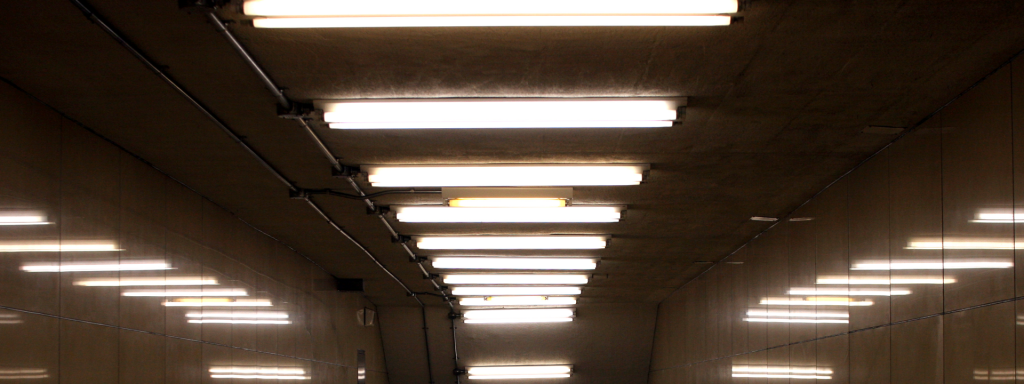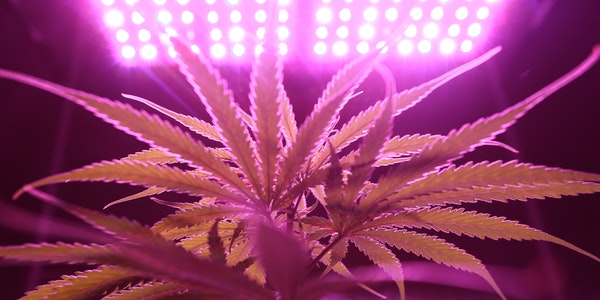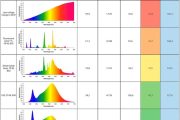The Effect of Spectrum on Plant Growth and Development
Light is one of the important conditions necessary for plant growth and development. After long-term measurement, observation and research, the law of spectral components required by different types of plants in the growth and development process varies with space. Shortwave light decreases with the increase in dimensionality. Increase and increase. The law of change with time is that the long-wave light increases in winter, and the short-wave light increases in summer. There is more short-wave light at noon in a day, and more long-wave light in the morning and evening. The main components of solar radiation are ultraviolet, visible and infrared. Different wavelengths of light have different properties and have different effects on the growth and development of plants.
Spectral composition and photosynthesis
Only visible light in the solar spectrum can be used for photosynthesis of plants. The utilization of light energy by plant photosynthesis starts from the absorption of light by photosynthetic pigments, and the absorption of light energy by photosynthetic pigments has obvious selectivity. Red light with a wavelength of 640~660nm and blue light with a wavelength of 430~450nm are the most absorbed part of chlorophyll and have the greatest photosynthetic activity. The blue-violet light of 400~500nm can be absorbed by carotenoids, the red-orange light and yellow-green light can be absorbed by bile pigment, and the green light is physiologically invalid light.
Spectral composition and plant growth
Generally, short-wavelength light such as blue-violet light and ultraviolet light can inhibit the growth of plants, thereby causing plants to form a thick and short form, and cause photosensitivity of plants, and promote the formation of anthocyanins and other plant pigments, which are more typical on mountains. The plants are short and grow slowly, possibly due to the inhibitory effects of ultraviolet radiation. Long-wavelength light such as red light and infrared light can promote plant growth. Red-orange light is beneficial to promote the formation of chlorophyll and promote seed germination. The red light with a wavelength of 660nm can affect the development of long-day plants, and the far-red light with a wavelength of 730nm can affect the flowering of short-day plants.
Spectral composition and plant product quality
Different wavelengths of solar radiation can form different photosynthetic products. Blue-violet light can promote the synthesis of more protein, red light is conducive to the synthesis of starch, short-wave light can promote the synthesis of anthocyanins, so that plant stems, flowers and fruits are brightly colored, but short-wave light can inhibit plant growth and prevent yellowing of plants. However, this principle can be used in vegetable production to produce leeks, garlic, bean sprouts and green onion.
In agriculture, the growth of plants can be promoted by changing the light quality. For example, colored film for raising seedlings, red film is conducive to increase the yield of leafy vegetables, purple film can increase the yield of eggplant, and melon plants accelerate development under red light, and the fruit is 20 ahead When it matures, the sugar and vitamin content of the pulp also increases.
What is spectrum
Spectrum: After the polychromatic light is split by a dispersion system (such as a prism, grating), the dispersed monochromatic light is arranged in order according to the wavelength (or frequency). The full name is the optical spectrum. The largest part of the spectrum. The visible spectrum is the part of the electromagnetic spectrum that is visible to the human eye. Electromagnetic radiation in this wavelength range is called visible light. The spectrum does not include all the colors that the human brain can distinguish visually, such as brown and pink.
Light waves are electromagnetic radiation generated by electrons in the movement of atoms. The movement of electrons inside the atoms of various substances is different, so the light waves they emit are also different. The study of the luminescence and absorption of different substances has important theoretical and practical significance, and it has become a specialized subject-spectroscopy. Infrared absorption spectra of molecules are generally used to study the vibrational and rotational spectra of molecules, and molecular vibrational spectroscopy has always been the main research topic.
Principles of spectroscopy
There are lights of various wavelengths (or frequencies) in polychromatic light, and these lights have different refractive indexes in the medium. Therefore, when the polychromatic light passes through a medium with a certain geometric shape (such as a triangular prism), the light with different wavelengths will undergo dispersion due to the different exit angles, projecting continuous or discontinuous colored light bands.
Spectral classification
★By wavelength area
Outside the red end of the visible spectrum, there are infrared rays with longer wavelengths; similarly, outside the purple end, there are ultraviolet rays with shorter wavelengths. Neither infrared nor ultraviolet can be detected by the naked eye, but can be recorded by instruments. Therefore, in addition to the visible spectrum, the spectrum also includes the infrared spectrum and the ultraviolet spectrum.
★By way of generation
According to the generation method, the spectrum can be divided into emission spectrum, absorption spectrum and scattering spectrum. Some objects can emit light by themselves, and the spectrum formed by the light directly produced by it is called emission spectrum. Emission spectra can be divided into three different types of spectra: linear spectra, band spectra and continuous spectra. The linear spectrum is mainly produced by atoms and is composed of some discontinuous bright lines; the band spectrum is mainly produced by the dense light in a certain wavelength range; the continuous spectrum is mainly produced by incandescent solids, liquids or high pressure Gas is excited to emit electromagnetic radiation, which consists of continuously distributed light of all wavelengths.
When white light passes through the gas, the gas will absorb light with the same wavelength as its characteristic spectral line from the white light passing through it, causing dark lines to appear in the continuum formed by the white light. At this time, the spectrum generated after light of certain wavelengths in the continuous spectrum is absorbed by the substance is called the absorption spectrum. Under normal circumstances, the characteristic spectral lines seen in the absorption spectrum will be less than the linear spectrum.
When light is irradiated on a substance, inelastic scattering occurs. In addition to the elastic component (Rayleigh scattering) with the same wavelength as the excitation light, there are components longer and shorter than the excitation light wavelength in the scattered light. The phenomenon is collectively referred to as the Raman effect. This phenomenon was discovered by Indian scientist Raman in 1928, so this kind of scattering of light that produces new wavelengths is called Raman scattering, and the resulting spectrum is called Raman spectrum or Raman scattering spectrum.
★Produce essence
According to the nature of production, spectrum can be divided into molecular spectrum and atomic spectrum.
In the molecule, the energy of the electronic state is 50-100 times larger than the energy of the vibrational state, and the energy of the vibrational state is 50-100 times larger than the energy of the rotational state. Therefore, the transitions between the electronic states of molecules are always accompanied by vibrational transitions and rotational transitions, so many spectral lines are clustered together to form a molecular spectrum. Therefore, molecular spectrum is also called band spectrum.
In an atom, when the atom is raised from the ground state to a higher energy state in some way, the energy inside the atom increases, and some of the electrons in the atom are raised to an excited state, but the excited state cannot be maintained. After a random period of time, the excited atoms will return to their original lower energy state. In an atom, the excited electron releases a photon when it returns to a lower energy orbit, that is to say, this energy will be emitted in the form of light, thus generating the emission spectrum of the atom, that is, the atomic spectrum. Because this atomic energy state change is non-continuous quantum, the resulting spectrum is also composed of some discontinuous bright lines, so the atomic spectrum is also called linear spectrum.





